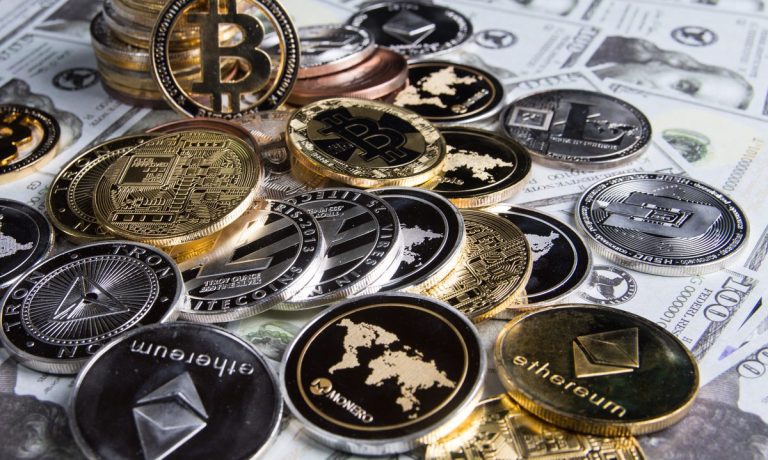
Heading into an important hearing later Tuesday morning (Feb. 8) by the House Financial Services Committee about the President’s Working Group on Financial Services recent stablecoin report, the Federal Reserve Bank of New York came out with a paper calling the dollar-pegged cryptocurrencies unnecessary and potentially risky in that they tie up enormous amounts of liquidity.
Meanwhile, another banking regulator, the acting chairman of the Federal Deposit Insurance Corporation (FDIC), Martin Gruenberg, put cryptocurrencies at the top of the agency’s agenda, calling the need to “evaluate crypto-asset risks” one of the its four top priorities for 2022.
Together, the two amount to another sign that after pushing cryptocurrencies and especially stablecoins to the top of the banking and financial stability agenda in 2021, government agencies are beginning to dig further down into the nuts and bolts of how to get out in front of crypto’s potential impact on financial institutions and money generally.
What’s a Stablecoin?
In a Feb. 7 post on the New York Fed’s Liberty Street Economics blog, four researchers conclude that “The Future of Payments is Not Stablecoins.”
While neutral on the underlying question of whether distributed ledger technology (DLT) — the backbone of blockchains — is the best next-generation exchange mechanism, the researchers conclude that stablecoins tie up far too much liquidity and are unnecessary. A better use for DLT, they argue, is tokenized deposits.
See: Boston Fed, MIT Digital Dollar Test Casts Doubt on Blockchain as Processing Platform
“The principle behind tokenized deposits is straightforward. Bank depositors would be able to convert their deposits into and out of digital assets — the tokenized deposits — that can circulate on a DLT platform,” said Rod Garratt, Michael Lee, Antoine Martin, and Joseph Torregrossa. “These tokenized deposits would represent a claim on the depositor’s commercial bank, just as a regular deposit does.”
Noting that recent research by both the G7 and President’s Working Group on Financial Services has emphasized the need to keep private banks at the center of the payments system, the four suggest that tokenized deposits are superior to stablecoins.
Read more: NY Fed: Tokenized Deposits Better Than Stablecoins
The current crypto stablecoins tie up liquidity — stablecoins’ current market cap is more than $155 million, although not all of it is fiat-backed — which could eventually make it difficult for banks to “satisfy their regulatory requirements to maintain sufficient liquidity.”
In this, at least, the report is at odds with a Feb. 1 report by researchers form the main Federal Reserve, who concluded that the safest way to bring dollar-pegged stablecoins into the mainstream is to ensure they are backed one-to-one by cash held in banks.
See also: Fed Paper Finds Stablecoin Risks Are Manageable, and Come With Rewards
As for the Boston Fed, its researchers point out that tokenized deposits would not lock up any more liquidity than is required by fractional reserve requirements and can use existing payments infrastructures that run through the Federal Reserve, the point out. This creates “a payment network that allows funds generated from multiple private sources to be exchanged seamlessly,” they said. “Merchants receiving these funds through deposit-based payment systems do not worry about the source of these funds; they transfer at par.”
And, tokenized deposits are FDIC insured.
As a result, tokenized deposits are better than crypto stablecoins and provide a more “realistic starting point” to creating a “better type of money,” the report argues.
All Together Now
That insurance is one of the key reasons that FDIC Acting Chair Gruenberg is so concerned about cryptocurrencies broadly that he has elevated them to the top of the agency’s agenda this year.
Noting that “the FDIC’s core mission is to maintain stability and public confidence in the U.S. financial system,” Gruenberg said that the “rapid introduction of a variety of crypto-asset or digital asset products into the financial system could pose significant safety and soundness and financial system risks.”
As the agency that oversees deposit insurance as well as the “orderly resolution of failed banks, including systemically important financial institutions,” the FDIC and other banking regulators “need to provide robust guidance to the banking industry on the management of prudential and consumer protection risks raised by crypto-asset activities,” he said.
That call for federal banking agencies to act together on this issue seems likely to happen, particularly in the field of stablecoins. The Office of the Comptroller of the Currency is focused heavily on stablecoins.
See: OCC’s Hsu: Stablecoins Can Boost Innovation If Regulated Like Banks
In January, Comptroller of the Currency Michael Hsu said strong bank regulation of stablecoins “would give credibility to the ‘stable’ part of stablecoins. Regulating stablecoin issuers as banks could also enable more innovation in crypto and make those innovations more durable.”